The Art of Observation: Mafalda Figueiredo's Confrontational Figures
Explore the art of Portuguese painter Mafalda Figueiredo, whose figurative work confronts themes of identity, gender, and societal perception through layered, cinematic imagery.

The Art of Being Seen – Exploring Mafalda Figueiredo’s Figurative Paintings
Mafalda Figueiredo, a Portuguese painter, captivates with her intense, symbolic, and cinematic compositions that offer us insights into themes of identity, societal gaze, and the complexities of femininity.
By capturing her subjects at such vulnerable yet powerful moments, Figueiredo transforms the traditional dynamics between viewer and artwork, empowering her figures to claim space within the narrative of their own lives.
Her work, known for its dreamlike quality and emotional resonance, often captures fleeting moments that feel as though the viewer has intruded on a private world.
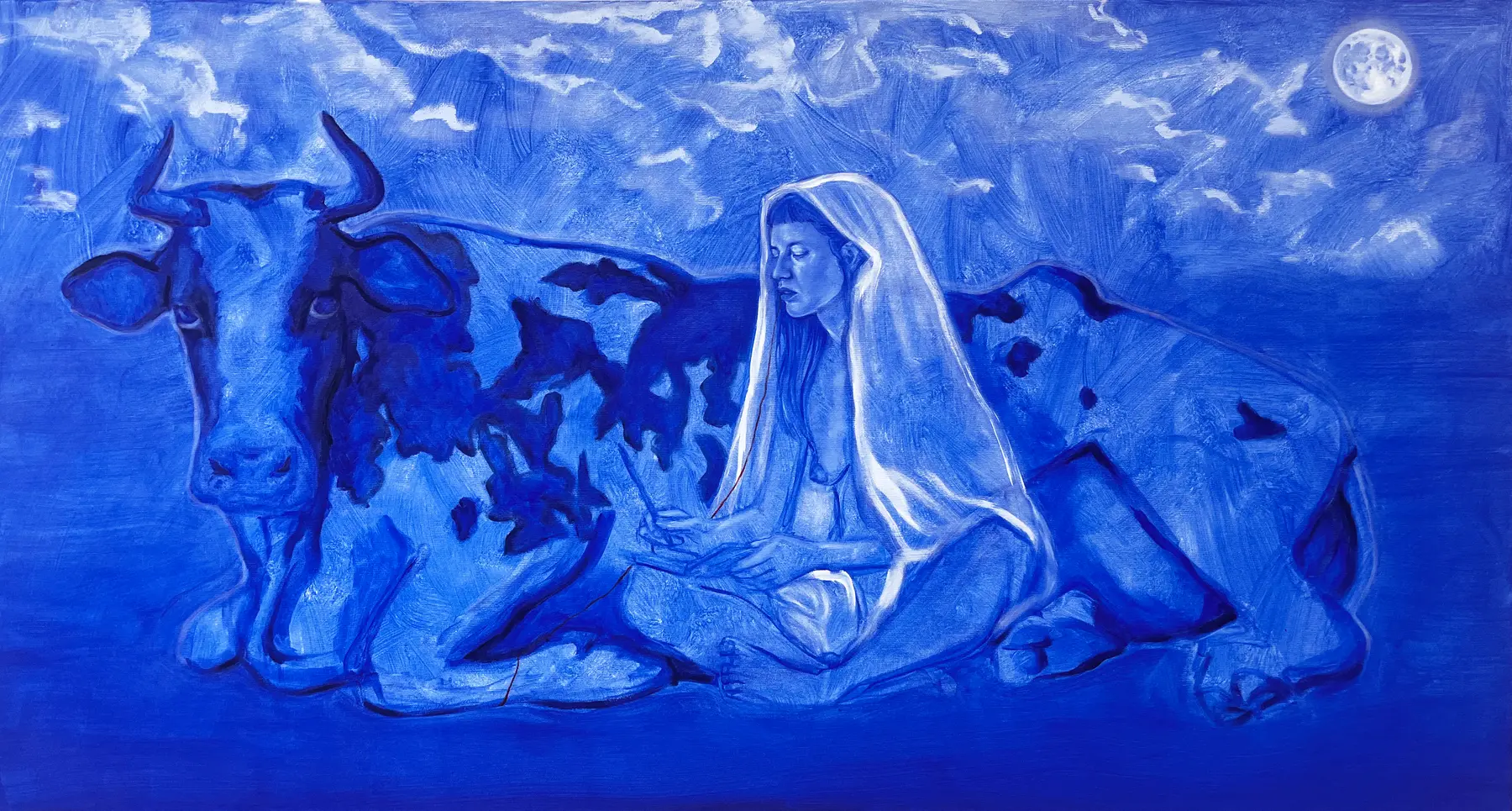
Each piece is both introspective and universally relatable, inviting viewers to consider their own relationship with observation, gendered perception, and identity.
Figueiredo’s figurative work is grounded in her own experiences, particularly as a woman who has felt “watched” for as long as she can remember.
Her paintings often depict versions of herself, exploring the dynamics of power, strength, and vulnerability through a gaze that confronts and acknowledges the viewer.

This gaze is central to Figueiredo’s work, as she explores the duality of observation—both empowering and invasive. Her figures, poised and intense, offer more than mere self-portraiture; they narrate broader stories of feminine strength, self-awareness, and resilience.
In examining her use of medium, Figueiredo employs oil paint with an almost translucent touch, layering thin washes to create figures that appear to hover on the brink of existence. This delicate transparency underscores the idea of ephemerality, a visual metaphor for the transient nature of perception and memory.
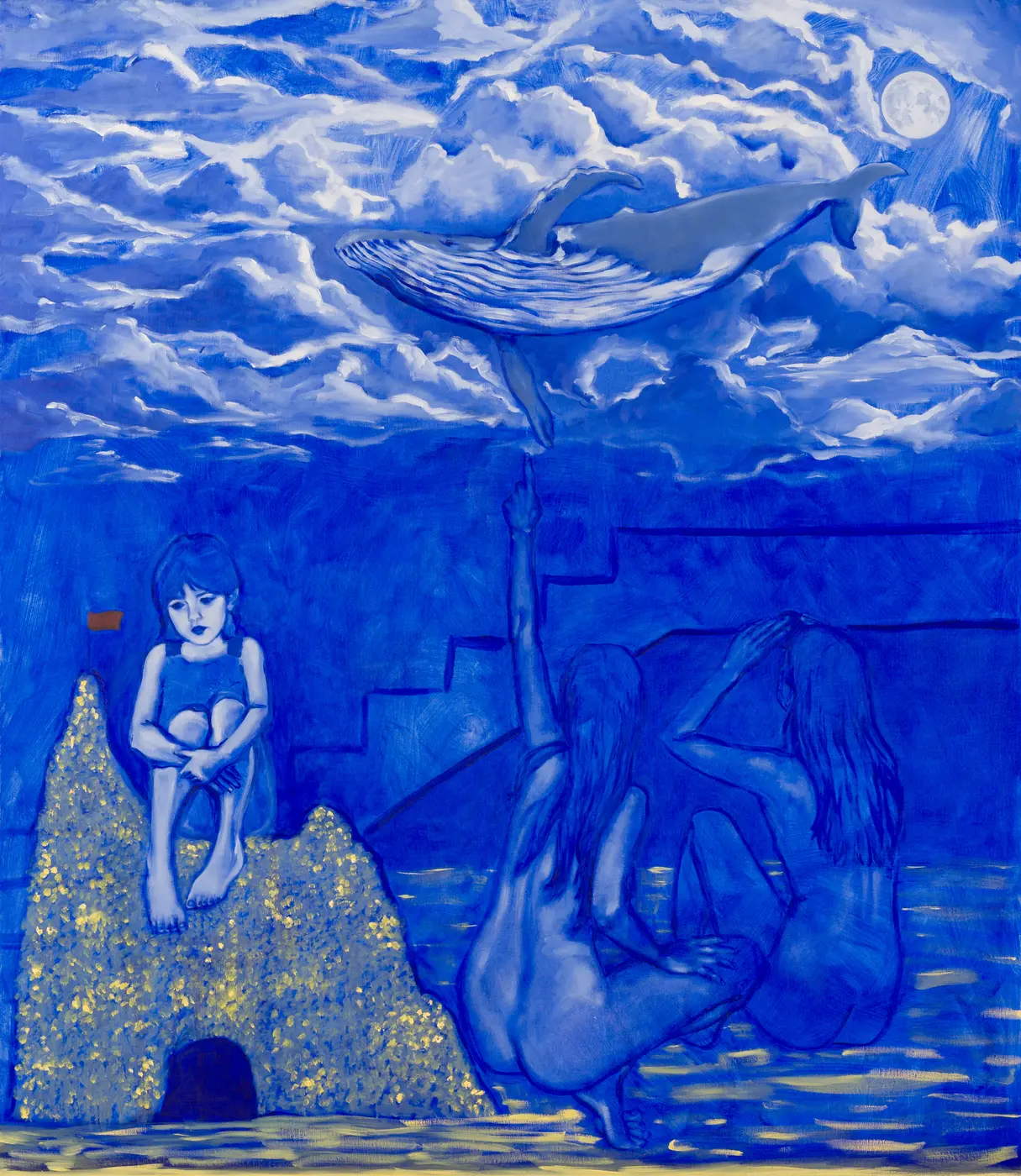
Through restrained gestures and soft but intense palettes, Figueiredo achieves a sense of movement within stillness, where her figures exist in a suspended state between past and present, dream and reality.
Her work channels the neo-expressionist vigor of the 1980s, yet remains distinctly contemporary, engaging with themes of self and society’s expectations in ways that resonate with today’s audiences.

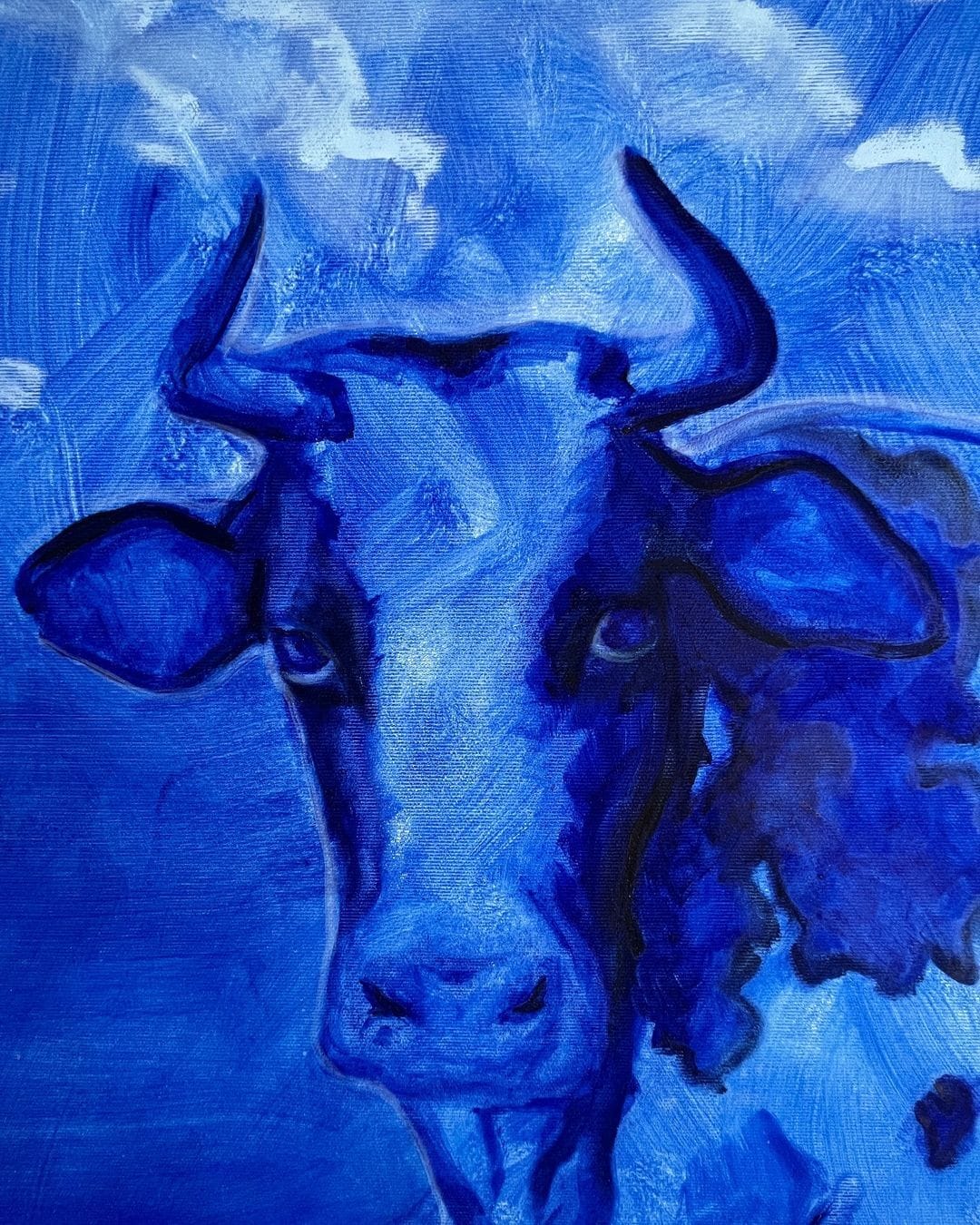
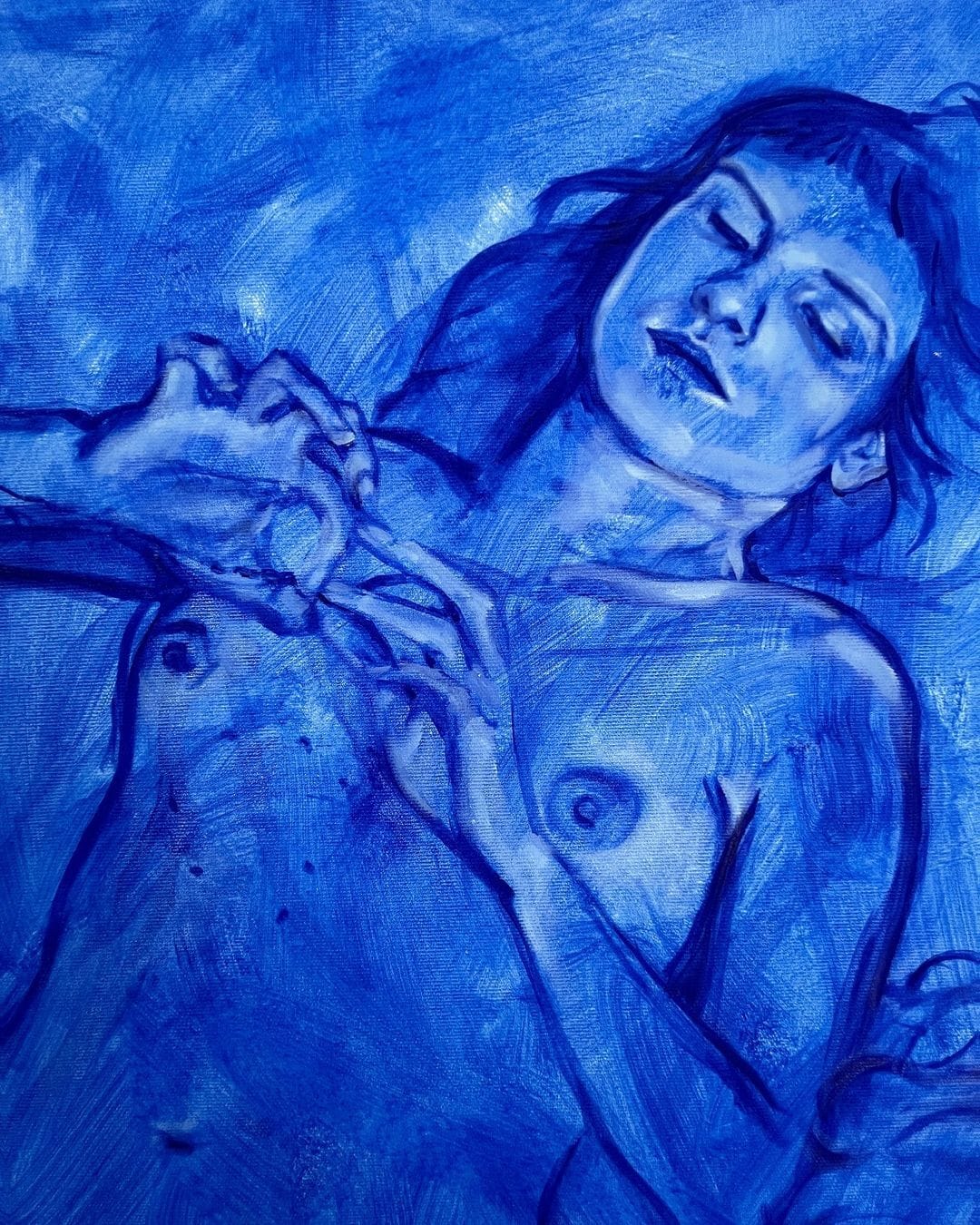

Mafalda Figueiredo: Details of her Paintings | Image Courtesy of the Artist
Figueiredo’s exploration of “being seen” does not stop at the symbolic. She employs a cinematic approach, capturing single, interrupted moments that suggest her subjects are unexpectedly aware of the viewer’s gaze.
This interplay between observer and observed creates an intimate yet uneasy engagement, as her subjects seem to challenge, question, or perhaps even reclaim their power over the gaze cast upon them.


Mafalda Figueiredo (left) Unexpected depths, 2024/ oil on canvas/ 70x55cm (right) Between painting and not, 2024/ oil on canvas/ 155x105cm | Image Courtesy of the Artist
By capturing her subjects at such vulnerable yet powerful moments, Figueiredo transforms the traditional dynamics between viewer and artwork, empowering her figures to claim space within the narrative of their own lives.
The technical prowess in Figueiredo’s work is matched by her thematic depth, as she deftly uses transparency, movement, and color to guide the viewer’s eye through her compositions.
Her choice of subdued tones and unfinished lines allows her figures to dissolve into the canvas, inviting multiple interpretations.
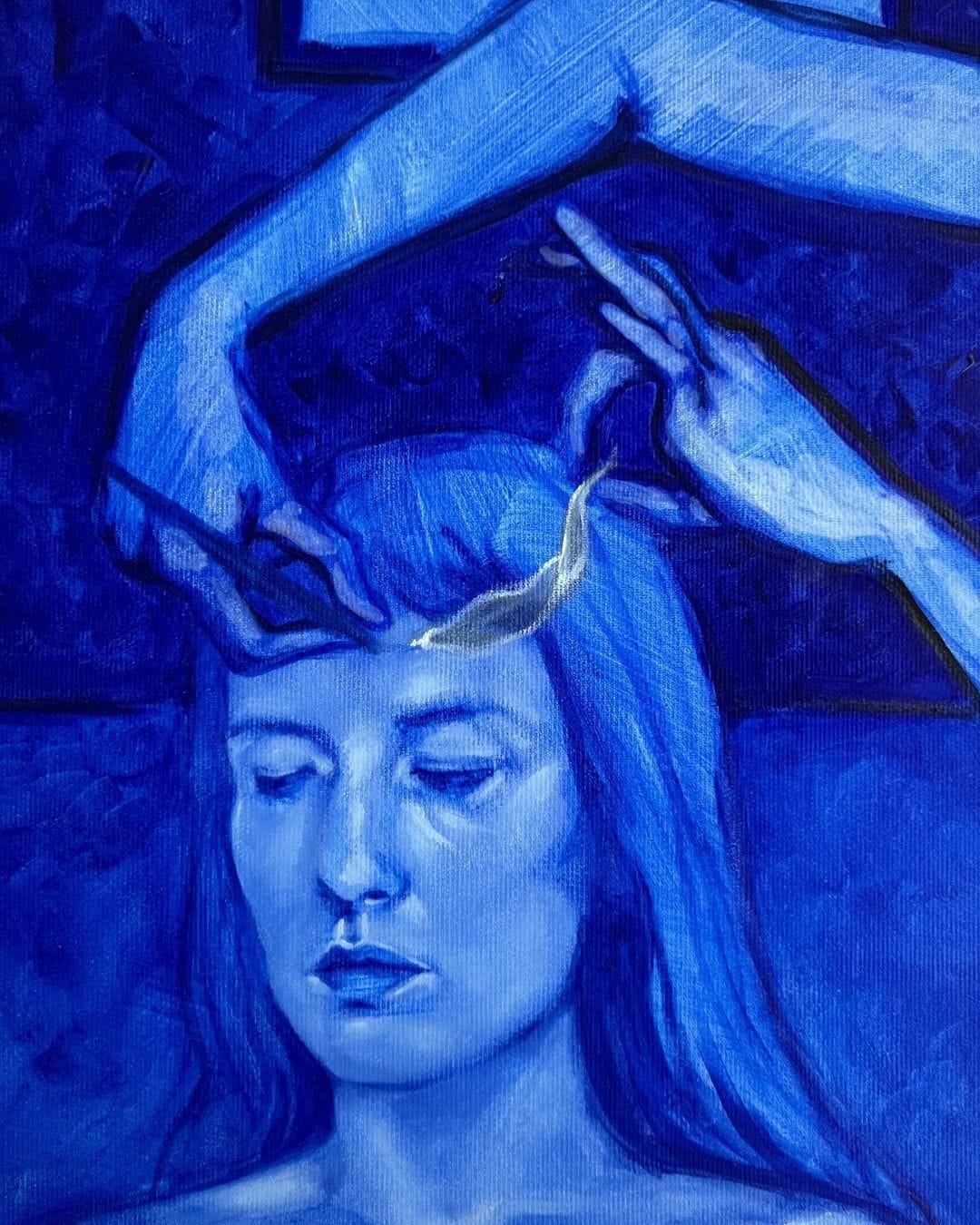
This lack of a definitive boundary between figure and ground blurs the lines between observer and participant, urging viewers to reconsider their roles in relation to the figures before them.
This invitation is part of a broader trend in contemporary art that values viewer agency, giving audiences a space to project their own narratives onto the work.
In many ways, Figueiredo’s paintings align with current dialogues within the contemporary art world around agency, self-representation, and feminist art.

Her work reflects a generation of artists who approach identity as fluid and multifaceted, challenging rigid notions of self-portraiture or autobiographical art.
Instead, Figueiredo’s self-reflective approach allows viewers to confront their perceptions of femininity and vulnerability, while also recognizing the strength embedded within such spaces.
She presents identity as both fragmented and cohesive, a layered experience open to interpretation and evolution.
Figueiredo’s art contributes to a larger cultural conversation about visibility, autonomy, and resilience.


Mafalda Figueiredo: (left) Outside the body, 2024/ oil on canvas/ 100x80cm -> (right) Daffodils, 2024/ oil on canvas/ 100x100cm | Photo: Daniel Lichterwaldt
In depicting figures that refuse to be “fixed” within one state or meaning, she challenges the societal pressures placed on women to conform to particular roles or appearances.
By exploring the complexities of identity and memory through her subjects, she emphasizes the ways in which people continuously reshape themselves in response to both internal and external gazes.
Her work, therefore, is not just an exploration of the self but a commentary on how society views and, in turn, shapes individual identity.
Her approach to figurative painting is refreshingly direct, yet charged with an undercurrent of complexity.

Each piece echoes the layered realities of her subjects, while the interplay of movement and stillness provides a quiet yet forceful resistance to easy interpretation.
Mafalda Figueiredo - Website
This depth makes Figueiredo a vital voice within contemporary art, one who captures the nuances of being seen—and unseen—within a world often quick to define others.
Mafalda Figueiredo: On Instagram
Save the date for Open Studio Days at West in Vienna's 1090 district! On November 9, art lovers have a unique opportunity to step into the creative spaces where contemporary visions come to life.
This "In Between" Open Studio event invites you to explore the works of talented artists, including the insightful Portuguese painter Mafalda Figueiredo.



